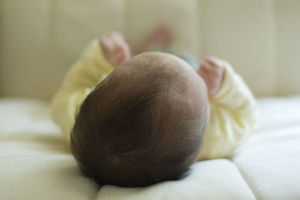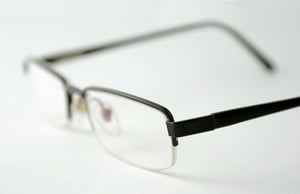Torticollis, which means twisted neck in Latin, is a condition affecting children from birth to around age two in which their neck muscles become shortened causing excessive head and chin tilting. Although torticollis can develop in the womb, incidents of newborns developing the disorder after birth have become increasingly common in recent years.
Back to Sleep Campaign has Unexpected Results
Torticollis has become more common since the American Academy of Pediatrics made their recommendation that babies be put to sleep on their backs in 1992. Called the Back to Sleep Campaign, the change has saved countless children from death by SIDS, but has had the unwelcome side effect of increasing rates of torticollis.
How SIDS Back to Sleep Campaign Causes Torticollis in Infants
If infants spend too much time on their backs, especially in the first six months of life, their neck muscles may become damaged. If a baby sleeps with their head constantly to one side, their neck muscles eventually shorten on that side causing the distinctive head and chin tilt of torticollis.
Sometimes parents fail to alternate head positions from side to side on a regular basis as a baby sleeps. Sometimes infants favor one side and lay on the same side of their head each night regardless of parent positioning. Regardless, the damaged neck muscles become shortened and contracted, reducing the range of motion and resulting in torticollis.
Infants spend a good portion of their time sleeping. Because they are put to sleep on their backs, that can mean they spend most of their day putting pressure on the back and side of their head, putting them at greater risk for the disorder.
Symptoms of Torticollis in Infants
What should parents look for? The main symptom of the condition is that the infant’s head is tilted towards one side of their body while the face is turned to the opposite side. This is called a cervical lateral flexion and usually appears within the first ten days of life. The chin of a child with torticollis is usually elevated and turned upwards in the opposite direction as the head tilt. This is called a cervical extension.
Additional symptoms include one side of face being larger than the other, a stiff neck, stunted development on one side of the face, favoring one side of the face over the other, a closed eye on the affected side or a flattened head on the back or one side known as plagiocephaly. It may also be impossible to manually turn the infant’s head from side to side.
Diagnosing Torticollis in Infants
Torticollis may not be immediately noticed by parents or doctors. Often, the head tilt is ascribed to the floppy neck of a normal infant. Many times the condition goes undiagnosed until the head tilt is quite dramatic and severe. Parents may need to be aggressive and persistent in getting early help for their child. Diagnosis for the disorder includes taking a birth history, a neurologic exam, x-rays of the cervical spine and an ophthalmological exam. Sometimes an MRI is necessary.
Treatments for Torticollis in Infants
Early treatment is the key to successful treatment for infants. Physical and occupational therapies are used to treat the disorder. Corrective helmets are used to correct head shape if the flattening of the head is severe enough. Physical therapy focuses on stretching of the tightened muscles and strengthening exercises to improve neck stability and muscle balance. An orthotic collar may also prove helpful. If physical and occupational therapies fail, surgery may be needed to release muscle tension.
It is important that even infants with mild cases be given treatment, as serious lifelong complications can arise if left untreated. Children do not outgrow torticollis. Untreated torticollis can lead to jaw malformations, craniofacial abnormalities, speech problems, vision problems, facial asymmetries, feeding difficulties and developmental delays of fine and gross motor skills.
Home Treatments & Prevention of Torticollis in Infants
There are several things parents can do to prevent and improve torticollis at home. When positioning their baby for sleep, parents should always alter their head position. When infants are lying on their back, using a specially made sleep positioning pillow can help. When the baby is awake, provide plenty of tummy time so the pressure is kept off the back and sides of the head and the infant can strengthen their neck muscles.
Sources
Torticollis Kids
Encyclopedia of Children’s Health
Bethesda Memorial Hospital






